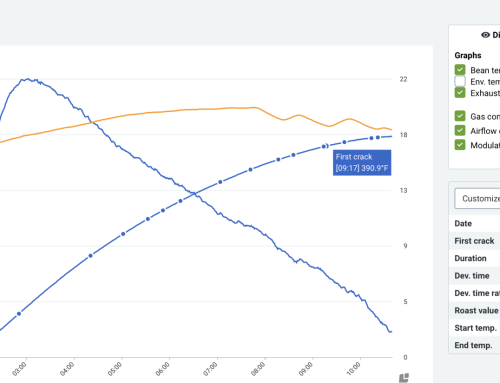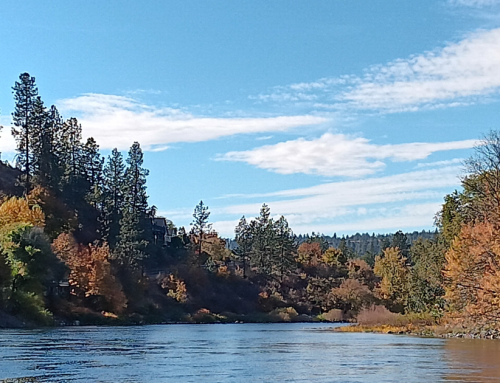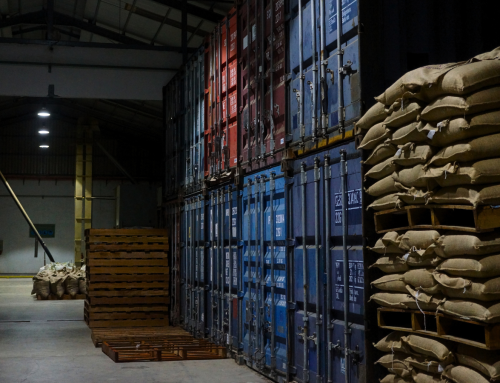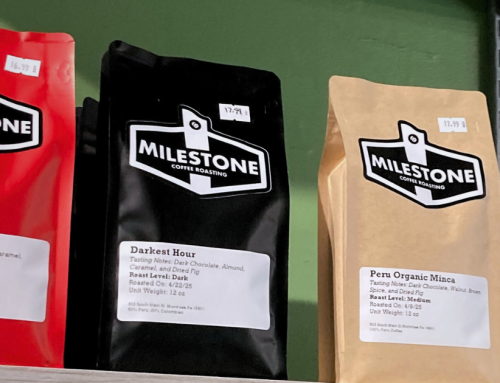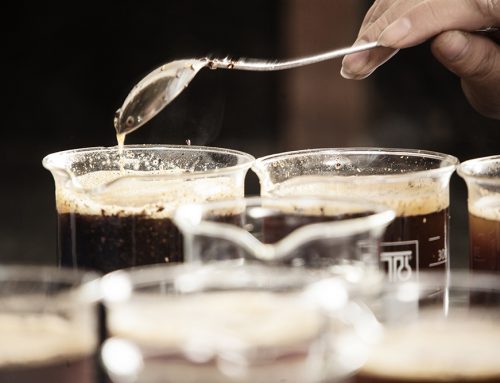How to Make Big Batch Cold Brew Coffee
The sun is out. The weather is warm. It’s time to swap out those steaming mugs of filter coffee for a refreshing glass of cold brew on the rocks.
Cold brew coffee is one of the easiest beverages to prepare in a big batch for serving summer customers or chugging it all yourself to cool down in the heat. There are several ways to make cold brew, either with containers and utensils you already have lying around or with specialized tools designed to optimize cold brew extraction.
But first, it’s important to know the difference between cold brew, cold drip, Japanese iced coffee, and iced coffee. They might all be chilled vehicles for caffeine, but their brewing methods and resulting beverages are different drinks altogether.
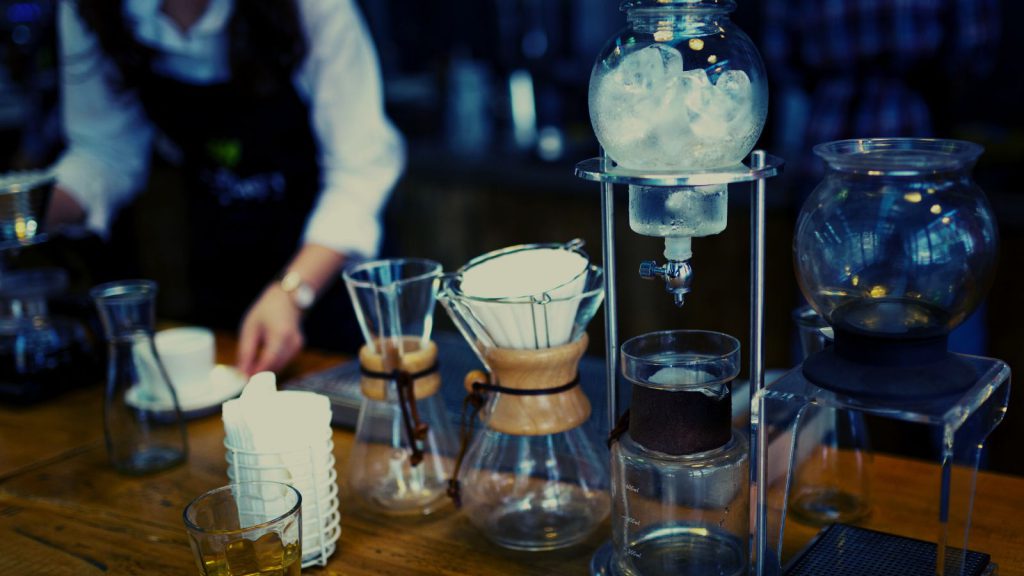
Siphon brewer – Image by Quang Nguyen Vinh from Pexels
Cold Brew vs. Cold Drip vs. Japanese Iced Coffee vs. Iced Coffee
Cold brew is a method of brewing coffee that involves steeping coarsely ground coffee beans in cold or room temperature water for an extended period, typically between 12 to 24 hours. That means all the grounds are fully immersed in water for the entire duration of the brew.
With cold drip coffee, however, cold or room temperature water is only allowed to drip slowly through the coffee grounds over a similar span of time. Cold drip coffee usually requires special devices that control the water flow and must be checked on from time to time to ensure the drip is consistent, ideally at a flow rate of one droplet per second.
Unlike traditional brewing methods that use hot water, cold brew, and cold drip coffee relies on time to extract the flavors from the coffee beans. Both methods result in similar beverages that can be served with ice or milk.
If time is not on your side, a quick fix is Japanese iced coffee. This method uses hot water to brew coffee in any pour over device directly onto a vessel filled with ice. The ice rapidly chills the hot coffee, preserving delicate aromas and flavors, and only takes minutes to prepare. The key is adjusting the brewing ratios to account for the dilution from the ice. This is often achieved by reducing the amount of hot water to double the strength of the coffee. So if you’re using a 1:15 pour over ratio, divide the amount of water by half and allot each half for hot water and ice cubes. It may require some adjustment, but you should end up with a brewed beverage that is neither too intense nor watery.
Iced coffee, on the other hand, is simply a regularly-brewed hot coffee with no adjustments to the recipe, served over ice. This can be a hot batch brew coffee, which can result in a watery-tasting beverage, or a hot espresso served over ice and room temperature water for an iced Americano or milk for an iced latte. However, this method often over-dilutes coffee flavors and is less preferred than the brewing methods, especially for chilled black coffee.
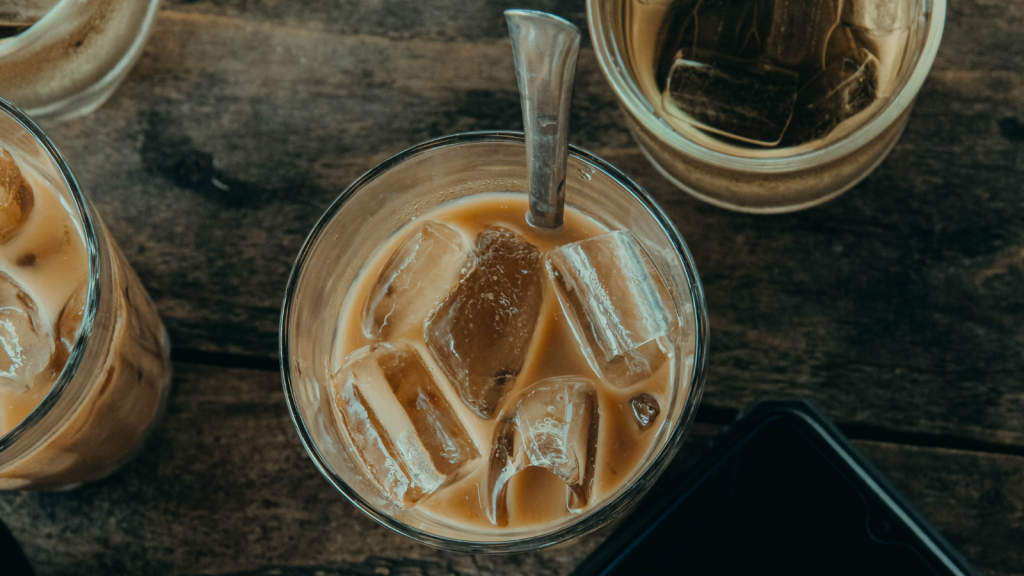
Iced coffee – Vietnam Photographer/Pexels
What is cold brew concentrate?
Cold-brew concentrate simply uses a higher ratio of coffee grounds to water during brewing. It is essentially a stronger and more potent version of cold brew meant to be diluted with water or other liquids before drinking.
You can whip up coffee cocktails and signature or seasonal drinks by mixing cold-brew concentrate with other ingredients like spirits, tonic water, or juices. Making a large batch of cold-brew concentrate is an efficient way to prepare for a heat wave or use up more roasted coffee creatively.
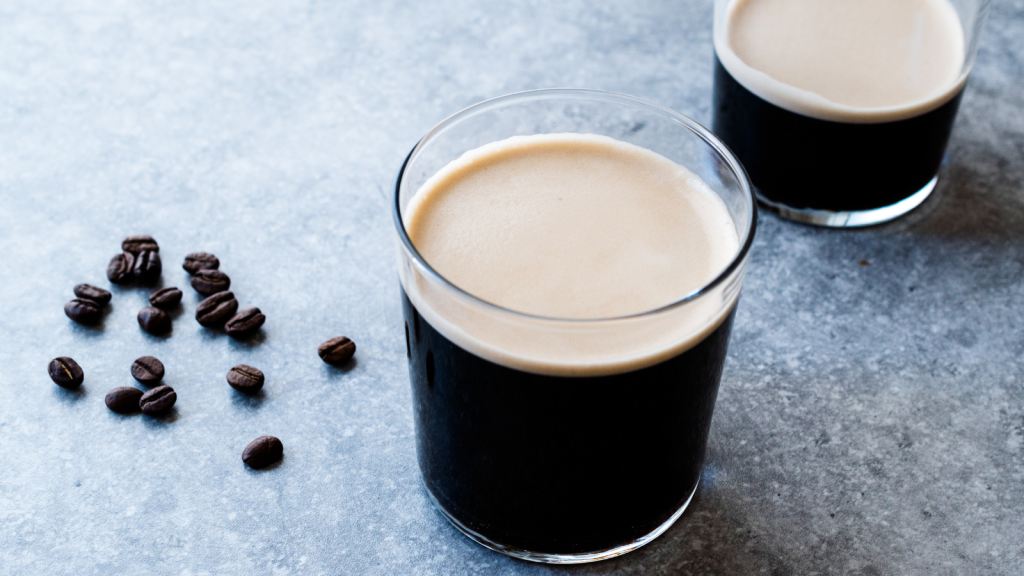
Frothy nitro cold brew coffee – Alpaksoy/Getty Images
What is nitro cold brew?
Nitro cold brew is a variation of cold brew coffee that is infused with nitrogen gas. It is served on tap, similar to how beer is served from a draft system, and poured into a glass or cup. The addition of nitrogen gas creates a unique and visually appealing experience, as well as a distinct, well-rounded flavor profile. The smooth, velvety texture is similar to that of a stout beer and requires a nitrogen canister to achieve.
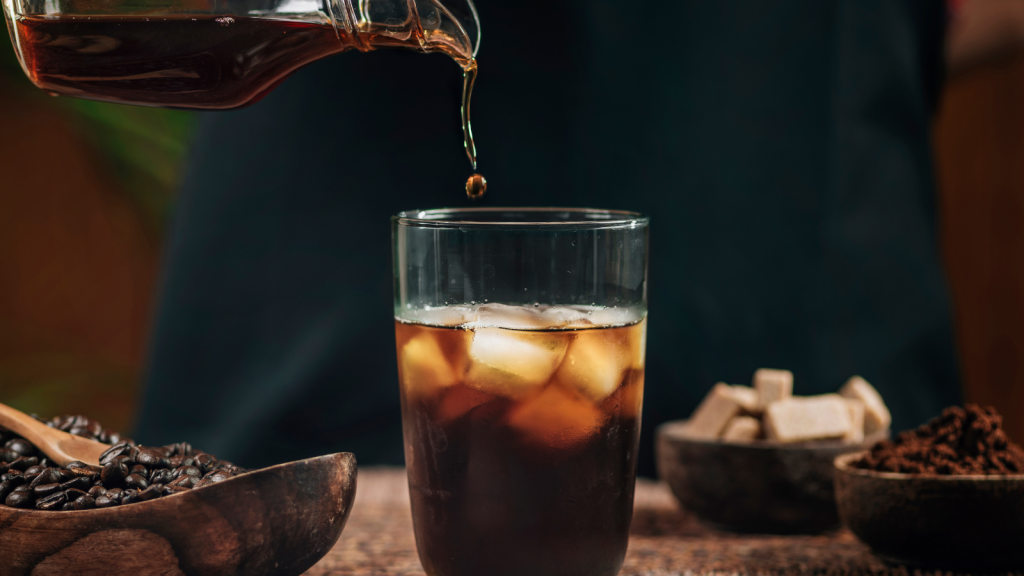
Pouring iced coffee over ice – Microgen/Getty Images
Does cold brew have more caffeine?
Pound for pound, cold brew coffee tends to contains more caffeine per typical serving than most other coffee-based beverages such as espresso or drip. How much caffeine is in coffee largely depends on the brewing method, and because cold brew has the longest extraction time, more caffeine ends up in the cup.
In a typical serving of cold brew coffee (250ml), you can have anywhere from 238-280mg of caffeine depending on how long the coffee grounds were steeped. In comparison, an espresso, and therefore an iced Americano with water added, contains around 68mg of caffeine.
The USFDA recommends that a healthy adult may consume up to 400mg of caffeine a day without dangerous or harmful effects. However, everyone responds to stimulants differently, and sensitivities can vary, particularly if someone is taking medication or experiencing other health conditions.
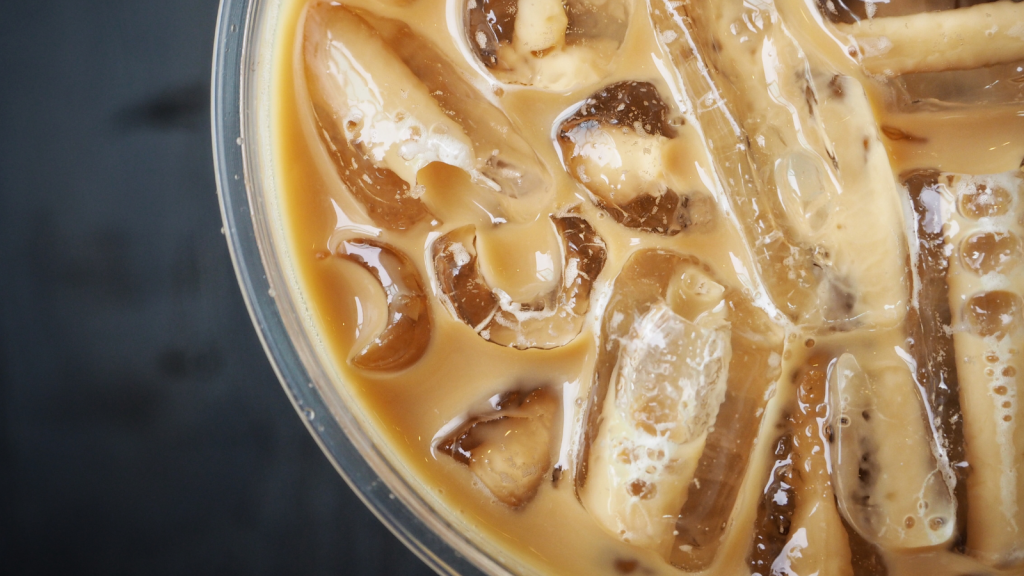
Iced latte – Luknaja/Getty Images
What coffee to use for cold brew?
It’s hard to decide which are the best coffee beans for cold brew. Almost any coffee from any origin or processing method can be used, even decaf! If you’re having trouble deciding which coffee to use for making a big batch of cold brew, it helps to keep in mind that cold brewing amplifies rich flavors and can dampen delicate flavors or acidity. Therefore, you might not be optimally extracting the best flavors out of an expensive geisha or high-acidity Kenya with the cold brew method.
Some of our favorites at Genuine Origin for green coffees for cold brews are the Honduras Reserva Pacavita Organic and Mexico Chiapas Bellavista Washed. We love steeping our Guatemala La Morena Huehuetenango Washed for a mix of chocolaty and fruity notes or the Costa Rica Cordillera de Fuego Anaerobic for cinnamon berry sweetness. You also can’t go wrong with Roastery Essentials like the Brazil Chapada de Minas Natural or Colombia Asobombo Organic Huila Washed.
Best grind size for cold brew coffee
Cold brew is best brewed with coarsely ground coffee. You’d probably be safe using the coarsest grind size possible or a size normally used for French Press coffee. If you normally grind for pour over or filter coffee, go a little coarser than that.
Best roast level for cold brew coffee
Medium roast coffee beans are often the best for cold brew coffee because you get the best of both worlds. A medium roast can preserve some of the more nuanced flavors of the coffee beans while the extended development time amplifies sweetness, resulting in a balanced and complex cold brew coffee.
However, the roasting level can play a big part in determining the final color of the brewed coffee. Light roast coffee beans result in a more reddish hue, while medium roast results in a light brown beverage and dark roast beans develop into a dark brown cold brew coffee. If the final presentation of the beverage is important to you, you should consider brewing with a roast level that corresponds to your desired color tone.
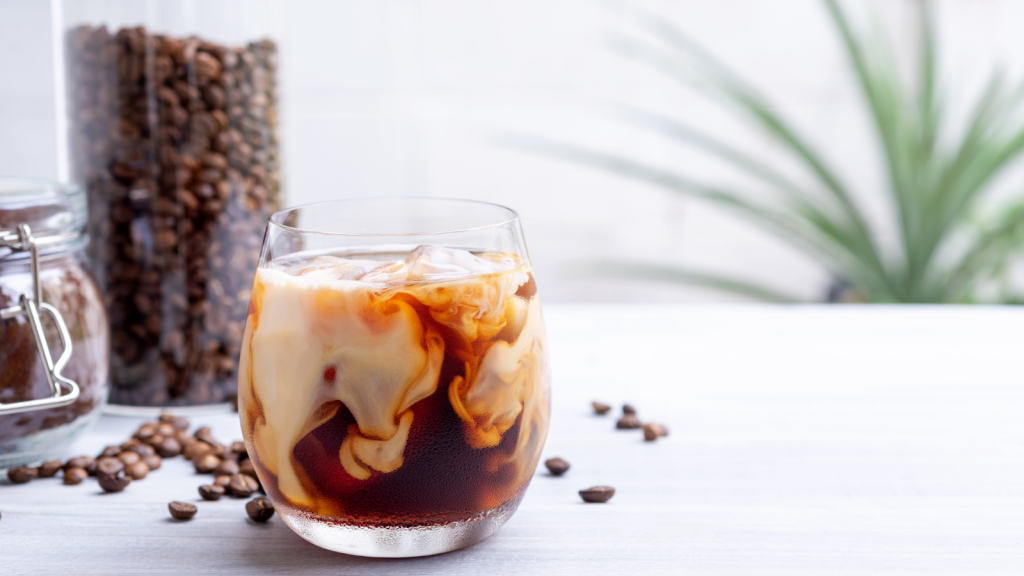
Cold brew coffee and roasted coffee beans – Premyuda Yospim/Getty Images
Best temperature for cold brew coffee
The best temperature to make big batch cold brew coffee is 22ºC, leaving the coffee steeped at room temperature. In an experiment by scientists at UC Davis, researchers examined a sensory analysis of full-immersion coffee with different characteristics. Coffee from three origins (El Salvador, Ethiopia, Sumatra) were roasted at three roasting levels (light, medium, dark) and immersed at three temperatures (4ºC, 22ºC, 92ºC).
In the experiment, each coffee was brewed until it reached equilibrium TDS and maximum extraction. Panelists perceived coffee brewed with 92ºC water for one hour as more bitter, sour, and rubbery. However, the panelists didn’t notice much difference between coffee brewed with 4ºC water in the refrigerator for 36 hours or with 22ºC water at room temperature for 12 hours. That means you can achieve the same results with a similar sensory profile more efficiently by brewing at room temperature instead of steeping the cold brew in the fridge.
Best cold brew coffee makers
Although you can make cold brew coffee with as little as a mason jar and a fine strainer, there are a few cold brew coffee makers on the market that will streamline the process. These include:
- Hario Mizudashi Cold Brew Coffee Pot for a simple, no-fuss infusion and can also be used as a serving or storage vessel.
- Toddy Cold Brew Coffee Maker System that can make a big batch of cold brew concentrate.
- KitchenAid Brushed Stainless Steel Cold Brew Coffee Maker for cold brew concentrate on tap.
- Marco ColdBRU Rapid Cold Brewer for up to two gallons of coffee concentrate in just three hours.
Easy recipe for big batch cold brew coffee concentrate
All of the above cold brew makers have their own specifications and recipes, but we’ve got a quick recipe for big batch of cold brew coffee concentrate that uses equipment you probably already own.
Prep time: 10 minutes
Steeping time: 12 hours
Serves: 16
Ingredients:
340g or 12oz coarsely ground coffee
1.9L or 12oz room temperature water
Instructions:
- Steep the coffee grounds in a large jar, ensuring all grounds are wet, for 12 hours.
- Strain the brewed coffee, first with a fine mesh or muslin cloth to remove the coarse grounds, then with a paper filter to remove fines for a cleaner cup.
- Serve with one-part cold brew concentrate (around 80ml) and two parts water, ice, or milk (160ml) for an 8oz beverage.
- Store the remaining cold brew concentrate in a clean, airtight jar or bottle for up to two weeks.
Cold brewing coffee is a super satisfying way to extract the smooth, bold flavors from your beans with little bitterness and sharp acidity. Grind up a big batch today, and you’ll be thanking yourself later for stocking up on a deliciously refreshing coffee supply for the summer days.
Disclaimer: The links provided and products mentioned in this blog are not sponsored and are intended solely for informational purposes. We do not receive any compensation or benefit from the products or services linked to in this blog. Any purchase or use of these products or services is at your own discretion and risk. We do not assume any responsibility for the quality, safety, or effectiveness of any products or services linked to in this blog.

